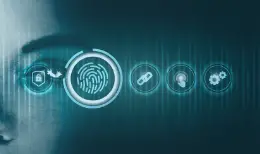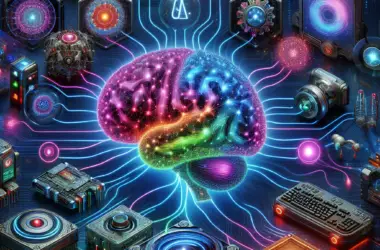Blockchain And Digital Rights Management: A New Paradigm For Intellectual Property

Executive Summary

The blockchain is a revolutionary new technology that has the potential to transform many different industries, including the way we manage and protect intellectual property (IP). In this article, we will explore the benefits and challenges of using blockchain for Digital Rights Management (DRM), and how it can create a new paradigm for IP.

Introduction
Digital Rights Management (DRM) is a system that is used to protect the rights of copyright holders and prevent unauthorized use of digital content. Traditional DRM systems are often criticized for being too restrictive and for stifling innovation. However, blockchain technology offers a new approach to DRM that is more secure, transparent, and user-friendly.
Blockchain Technology And DRM
Blockchain is a distributed ledger technology that allows for the secure and transparent recording of transactions. It is based on the principle of cryptography, which makes it very difficult to tamper with or hack. This makes blockchain an ideal technology for DRM, as it can provide a secure and tamper-proof way to track and manage the use of digital content.
Benefits Of Using Blockchain For DRM
There are many benefits to using blockchain for DRM, including:
- Increased security: Blockchain is a very secure technology, which makes it difficult to hack or tamper with. This makes it an ideal technology for protecting valuable digital content.
- Transparency: Blockchain is a transparent technology, which means that all transactions are recorded on a public ledger. This makes it easy to track the use of digital content and to ensure that copyright holders are getting paid for their work.
- Efficiency: Blockchain is a very efficient technology, which can help to reduce the costs of DRM.
- User-friendliness: Blockchain-based DRM systems are more user-friendly than traditional DRM systems. This is because they do not require users to install special software or to create an account.
Challenges Of Using Blockchain For DRM
There are also some challenges to using blockchain for DRM, including:
- Scalability: Blockchain is a relatively new technology, and it is not yet clear how well it will scale to large-scale applications.
- Cost: Blockchain transactions can be expensive, which could make it difficult to use for DRM on a large scale.
- Complexity: Blockchain technology can be complex, which could make it difficult for some users to understand and use.
Top 5 Subtopics Related To Blockchain and DRM
1. Smart Contracts
Smart contracts are self-executing contracts that are stored on the blockchain. They can be used to automate the process of DRM, such as by automatically paying copyright holders when their work is used. Smart contracts can also be used to create new types of DRM systems, such as pay-per-use models.
2. Digital Rights Management Tokens
Digital rights management tokens are tokens that are used to represent the rights to use digital content. These tokens can be bought and sold on a decentralized marketplace, such as an exchange. This allows copyright holders to easily sell the rights to use their work, and it also allows users to easily buy the rights to use the content they want to use.
3. Decentralized DRM
Decentralized DRM is a DRM system that is not controlled by a central authority. Instead, it is controlled by a network of computers that are spread out across the world. This makes it more difficult to hack or tamper with, and it also makes it more resistant to censorship.
4. Blockchain-Based Content Delivery Networks
Blockchain-based content delivery networks are networks that use blockchain technology to deliver digital content. This can help to improve the efficiency and security of content delivery, and it can also help to reduce costs.
5. Privacy-Enhancing DRM
Privacy-enhancing DRM is a DRM system that protects the privacy of users. It does this by using encryption to protect the user’s personal information, such as their name, address, and IP address. This is making it more difficult for copyright holders to track the use of their work, but it is also better for user privacy.
Conclusion
Blockchain technology has the potential to revolutionize the way we manage and protect intellectual property. Blockchain-based DRM systems are more secure, transparent, efficient, and user-friendly than traditional DRM systems. However, there are also some challenges to using blockchain for DRM, such as scalability, cost, and complexity. As these challenges are overcome, we can expect to see more and more DRM systems being built on blockchain technology.
Keyword Phrase Tags
- Blockchain
- Digital Rights Management
- Intellectual Property
- Smart Contracts
- Decentralized DRM


This is a groundbreaking article! The convergence of blockchain and DRM has the potential to revolutionize the way we think about intellectual property. I’m excited to see how this technology develops in the coming years.
I have serious concerns about the implications of this technology for copyright law. The blockchain could make it much easier for people to infringe on copyrights. We need to proceed with caution.
The blockchain is a distributed ledger that is used to record transactions. It is secure and transparent, which makes it an ideal platform for DRM. This technology has the potential to solve many of the problems that currently exist with DRM.
I am opposed to the use of blockchain for DRM. This technology will only serve to further entrench the power of copyright holders. It will make it more difficult for people to access and share information.
LOL, this article is so full of it. Blockchain is just a buzzword. It’s not going to change anything. DRM is a joke. It doesn’t work. The only people who benefit from this technology are the copyright holders.
Oh, great. Just what we need: another way for copyright holders to control what we can and cannot do with our own property. This is a disaster for creativity and innovation.
I can’t believe people are actually taking this seriously. Blockchain DRM is like putting a lock on a door that’s already locked. It’s completely unnecessary and it’s just going to make it harder for people to enjoy their content.
The blockchain has the potential to revolutionize the way we think about intellectual property. It can be used to create more secure and transparent systems for managing and protecting creative works.
I am concerned about the privacy implications of blockchain DRM. This technology could be used to track people’s activities online and to collect data about their preferences. We need to ensure that this technology is used in a responsible manner.
I am excited about the potential of blockchain DRM. This technology has the potential to create a more fair and equitable system for managing intellectual property. I believe that it will ultimately benefit both creators and consumers.
I am skeptical of the claims that blockchain DRM is a panacea for all of the problems with DRM. I believe that it is important to proceed with caution and to carefully consider the potential risks and benefits of this technology.
The blockchain is not a magic bullet for DRM. It has its own set of challenges and limitations. We need to carefully consider how we use this technology and to ensure that it does not create more problems than it solves.
I am concerned about the potential for blockchain DRM to be used to suppress dissent and to limit access to information. We need to ensure that this technology is used in a way that protects the public interest.